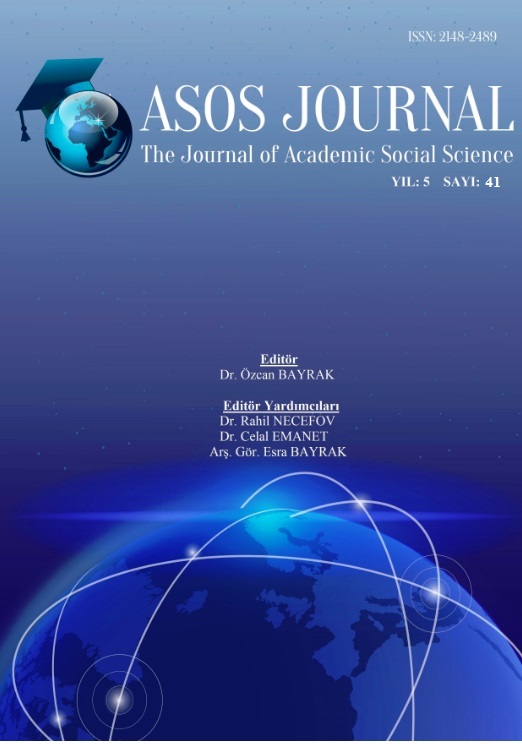Author :
Abstract
Kamusallık, kamusal alan veya kamuoyu gibi kavramların birbirine dayalı anlamlarını sanat eseri ve kamuoyu ilişkisi dikkate alındığında, açıklanmaya muhtaç olduğu görülür. Kamusal alan, kamusallık sorununun toplum tarafından aşılmasıyla; sosyal veya siyasal bir hak arama, müzakere edebilme, kuvvetler ayrılığında bir denge unsuru, tasada ve sevinçte çeşitli aktiviteleri yapabilme vb. gibi eylemleri düzenleyen hukuk ve demokrasi ilkesi olarak kabul edilir. Toplumun tarihi süreçte gelişerek elde ettiği bir arada yaşama kültürü ve sürdürülürlük ilkesi, kamuoyu denilen denge unsurunu doğurmuştur. Bu örgütsüz hakemlik müessesi, sadece kamusal alan olarak sınırlandırılmış alanları denetler ve düzenler düşüncesini aşan bir durumdur. Kamuoyunun denetlediği alan yaşamın bütününü kapsar. Açık ve ya kapalı mekanlara konulacak sanat eserinin kamuoyu ile toplumsal bir bağ kurması kamusallık adına beklenir. Kamusallık değeri taşıyan eser; bir kahramanlık destanı, bir aşk öyküsü ve ya hüzünlü bir yok oluşu ya da sadece soyut bir anlatımı ifade edebilir. Bu eserlerin varlığı ve ya yokluğu sadece siyasi ve ya bir otoritenin yetkisine bırakılamaz bu karar daha çok kamuoyunu ilgilendirir.
Keywords
Abstract
When artisticand public relations are taken into consideration, it is obvious that the interrelated meanings of concepts such as publicness, public area or public opinion need to be explained. Over coming public area and publicness problems in the society is considered as principles of judicial system and democracy which organize actions such as; seeking a social and political right, ability to discuss, being a power balance, being able to take different actions during joy and sorrow, etc.The culture of coexistence and the principle of sustainability that the society has developed in the course of the history has created a balance called public opinion. This unorganized refereeing system is beyond controlling only restricted areas as public areas, and the regulations.The field that the public audits covers thewhole life. The artwork to be placed in open or enclosed spaces is expected to form a social connection with the public in the name of publicness. The work bearing the value of publicness can be a heroic epic, a lovestory, a sad annihilation, or simply an abstract narrative. The existence and the absence of these works can not be in the hands of a politiicianor an authority. This decision is rather up to the society.





